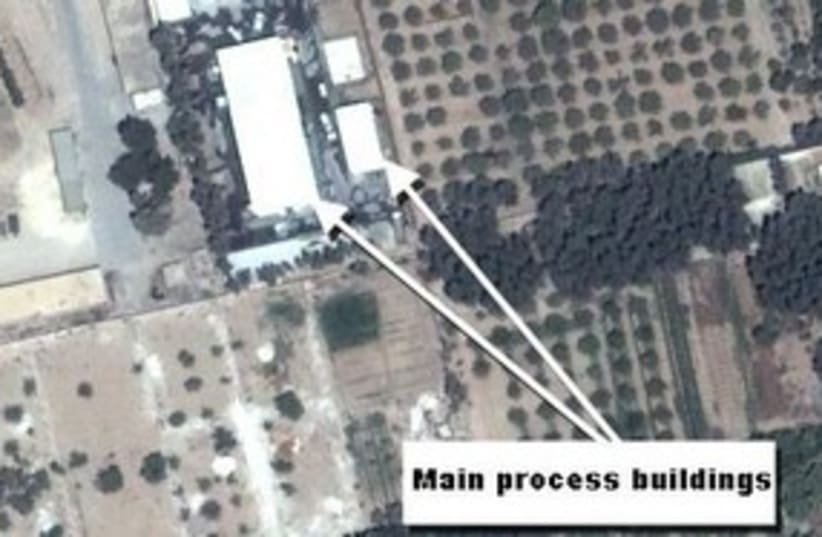The German Sueddeutsche Zeitung newspaper on Thursday identified the location of the site, which is suspected of containing a small uranium conversion facility that is functionally related to the covert reactor at al-Kibar that the Israel Air Force destroyed in September 2007.RELATED:Satellite images reveal 'uranium plant' in SyriaAccording to the newspaper and a subsequent analysis of satellite footage by the Washington-based Institute for Science and International Security (ISIS), the facility is reportedly intended for processing uranium yellowcake into uranium tetrafluoride (UF4), and could have been related to making fuel for the reactor destroyed in 2007.Barak said that Israeli intelligence and the International Atomic Energy Agency were aware of the Syrian facilities and that United Nations inspectors were working to gain access to them.Prime Minister Binyamin Netanyahu declined to comment on the reports, but Strategic Affairs Minister Moshe Ya’alon was quoted as warning Syrian President Bashar Assad “not to challenge us.”Minister-without-Portfolio Yossi Peled told Israel Radio that Israel would not allow hostile countries to obtain nuclear weapons.“Assad has already proven that he has negative intentions,” Ya’alon said on the sidelines of an IDF memorial service. “We know him as someone who is connected to Iran on one side and Hezbollah on the other.”In December, The Jerusalem Post reported on a previous ISIS report that named three suspected facilities as being functionally related to the al-Kibar reactor.Thursday’s report said the Marj as-Sultan facility’s operational status was still unknown, but Damascus was suspected of clearing out the buildings before mid-2008, in an effort to disguise activities carried out there.Syria has continued to refuse requests by the IAEA to inspect the Marj as-Sultan facility, as well as other sites that may be related to the nuclear reactor project, the report said.Satellite images of the site near Marj as-Sultan, obtained by the ISIS, reveal that on July 25, 2008, there was considerable activity involving pouring material on the ground, as well as movement by trucks and other vehicles.The ISIS document said this could have been part of a plan to lay down concrete or asphalt, which could be “an attempt to defeat the environmental sampling that IAEA inspectors would likely carry out to see if uranium was present, in the event of a visit to these suspect sites.”
The document cites the Sueddeutsche Zeitung to the effect that among the equipment kept inside two buildings near the Marj as-Sultan site, there was a scrubber, two cyclone separators, large diameter pipes, a manifold, reaction vessels made from stainless steel, and storage tanks.This equipment is in line with “what would be expected in a small uranium conversion facility,” the ISIS report said.
'Israeli intelligence aware of Syrian nuke facilities'
Barak says sites known to IAEA, UN; Ya'alon warns Assad "not to challenge" Israel; uranium conversion reactor said to be located east of Damascus.
